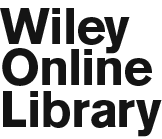“Mental health literacy”: a survey of the public's ability to recognise mental disorders and their beliefs about the effectiveness of treatment
Abstract
Objectives: To assess the public's recognition of mental disorders and their beliefs about the effectiveness of various treatments (“mental health literacy”).
Design: A cross‐sectional survey, in 1995, with structured interviews using vignettes of a person with either depression or schizophrenia.
Participants: A representative national sample of 2031 individuals aged 18–74 years; 1010 participants were questioned about the depression vignette and 1021 about the schizophrenia vignette.
Results: Most of the participants recognised the presence of some sort of mental disorder: 72% for the depression vignette (correctly labelled as depression by 39%) and 84% for the schizophrenia vignette (correctly labelled by 27%). When various people were rated as likely to be helpful or harmful for the person described in the vignette for depression, general practitioners (83%) and counsellors (74%) were most often rated as helpful, with psychiatrists (51%) and psychologists (49%) less so. Corresponding data for the schizophrenia vignette were: counsellors (81%), GPs (74%), psychiatrists (71%) and psychologists (62%). Many standard psychiatric treatments (antidepressants, antipsychotics, electroconvulsive therapy, admission to a psychiatric ward) were more often rated as harmful than helpful, and some nonstandard treatments were rated highly (increased physical or social activity, relaxation and stress management, reading about people with similar problems). Vitamins and special diets were more often rated as helpful than were antidepressants and antipsychotics.
Conclusion: If mental disorders are to be recognised early in the community and appropriate intervention sought, the level of mental health literacy needs to be raised. Further, public understanding of psychiatric treatments can be considerably improved.




